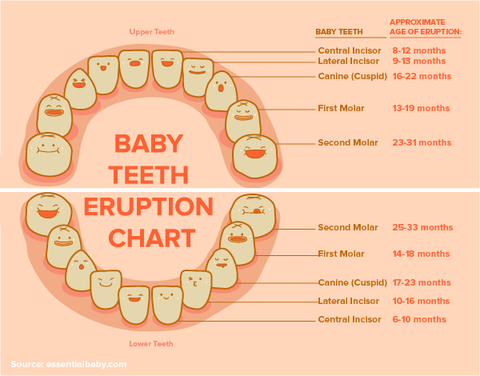Teething Chart
Teething can be a frustrating time for little ones and their parents. But knowing what to expect during teething and how to make the process a little less painful can help you manage.
While teething can begin as early as 3 months, most likely you'll see the first tooth start pushing through your baby's gum line when your little one is between 4 and 7 months old.

The first teeth to appear usually are the two bottom front teeth, also known as the central incisors. They're usually followed 4 to 8 weeks later by the four front upper teeth (central and lateral incisors). About a month later, the lower lateral incisors (the two teeth flanking the bottom front teeth) will appear.
Next to break through are the first molars (the back teeth used for grinding food), then finally the eyeteeth (the pointy teeth in the upper jaw). Most children have all 20 of their primary teeth by their third birthday. (If your child's teeth come in much slower than this, speak to your doctor.)
As children begin teething, they might drool more and want to chew on things (our teethers and teething jewellery are perfect for bugs during this time). For some babies, teething is painless. Others may have brief periods of irritability, while some may seem cranky for weeks, with crying spells and disrupted sleeping and eating patterns. Teething can be uncomfortable, but if your baby seems very fussy, talk to your doctor.
